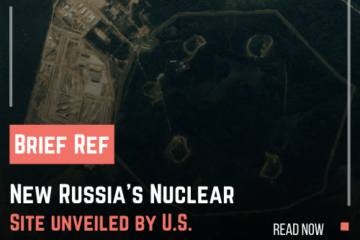What is happening along the coasts of Peru and Ecuador?
Unusually high waves, some reaching up to 13 feet, have been battering the coasts of Peru and Ecuador since December 25, 2024. These massive waves, caused by persistent winds originating off the coast of the United States, have led to significant disruptions in the region. The phenomenon has prompted widespread safety measures, including the closure of beaches and ports, and tragically resulted in at least one fatality in Ecuador.
When did these waves start, and how long will they last?
The waves began intensifying on December 25, 2024, and reached a “strong intensity” by December 28. According to the Peruvian Navy’s Chief of Hydrography and Navigation, Captain Enrique Varea, the swells are expected to last until January 1, 2025. However, abnormal swells may persist beyond that date.
Why are these massive waves occurring?
The high waves are being driven by persistent winds over the surface of the ocean, originating thousands of kilometers away off the coast of the United States. These winds generate energy that travels across the ocean, creating the unusual wave activity impacting the coasts of Peru and Ecuador.
Where are the most affected areas?
In Peru, the central and northern stretches of the coastline have been severely impacted. The municipality of Callao, near the capital Lima, has closed several beaches and barred tourist and fishing boats from venturing out. In Ecuador, the coastal city of Manta reported the death of a missing person in the Barbasquillo sector. Both countries have taken significant precautions to minimize further risks.
Who is involved in managing the situation?
Key agencies and individuals include:
- Peru’s Navy: Led by Captain Enrique Varea, the navy is closely monitoring the situation and providing updates.
- National Emergency Operations Center (Peru): Announced the closure of 91 out of 121 ports until January 1, 2025.
- National Secretariat for Risk Management (Ecuador): Confirmed the recovery of a missing person’s body in Manta.
- Local Authorities: In both Peru and Ecuador, local governments are coordinating closures and safety measures.
What are the impacts of these massive waves?
- Loss of Life: One confirmed fatality in Manta, Ecuador.
- Economic Disruptions: Closure of beaches and ports has affected fishing and tourism industries in both countries. Dozens of small fishing boats and businesses near the sea have suffered damage.
- Evacuations: Public squares and jetties were submerged, forcing residents in affected areas to flee to higher ground.
What’s next for the affected regions?
Authorities are focused on monitoring and mitigating risks. In Peru, beaches and ports will remain closed until January 1, with possible extensions if swells persist. Both countries are urging residents to stay away from the coast and comply with safety advisories. Long-term, governments may evaluate coastal infrastructure resilience and update emergency preparedness plans to handle similar events in the future.What is happening along the coasts of Peru and Ecuador?
Unusually high waves, some reaching up to 13 feet, have been battering the coasts of Peru and Ecuador since December 25, 2024. These massive waves, caused by persistent winds originating off the coast of the United States, have led to significant disruptions in the region. The phenomenon has prompted widespread safety measures, including the closure of beaches and ports, and tragically resulted in at least one fatality in Ecuador.
When did these waves start, and how long will they last?
The waves began intensifying on December 25, 2024, and reached a “strong intensity” by December 28. According to the Peruvian Navy’s Chief of Hydrography and Navigation, Captain Enrique Varea, the swells are expected to last until January 1, 2025. However, abnormal swells may persist beyond that date.
Why are these massive waves occurring?
The high waves are being driven by persistent winds over the surface of the ocean, originating thousands of kilometers away off the coast of the United States. These winds generate energy that travels across the ocean, creating the unusual wave activity impacting the coasts of Peru and Ecuador.
Where are the most affected areas?
In Peru, the central and northern stretches of the coastline have been severely impacted. The municipality of Callao, near the capital Lima, has closed several beaches and barred tourist and fishing boats from venturing out. In Ecuador, the coastal city of Manta reported the death of a missing person in the Barbasquillo sector. Both countries have taken significant precautions to minimize further risks.
Who is involved in managing the situation?
Key agencies and individuals include:
- Peru’s Navy: Led by Captain Enrique Varea, the navy is closely monitoring the situation and providing updates.
- National Emergency Operations Center (Peru): Announced the closure of 91 out of 121 ports until January 1, 2025.
- National Secretariat for Risk Management (Ecuador): Confirmed the recovery of a missing person’s body in Manta.
- Local Authorities: In both Peru and Ecuador, local governments are coordinating closures and safety measures.
What are the impacts of these massive waves?
- Loss of Life: One confirmed fatality in Manta, Ecuador.
- Economic Disruptions: Closure of beaches and ports has affected fishing and tourism industries in both countries. Dozens of small fishing boats and businesses near the sea have suffered damage.
- Evacuations: Public squares and jetties were submerged, forcing residents in affected areas to flee to higher ground.
What’s next for the affected regions?
Authorities are focused on monitoring and mitigating risks. In Peru, beaches and ports will remain closed until January 1, with possible extensions if swells persist. Both countries are urging residents to stay away from the coast and comply with safety advisories. Long-term, governments may evaluate coastal infrastructure resilience and update emergency preparedness plans to handle similar events in the future.




